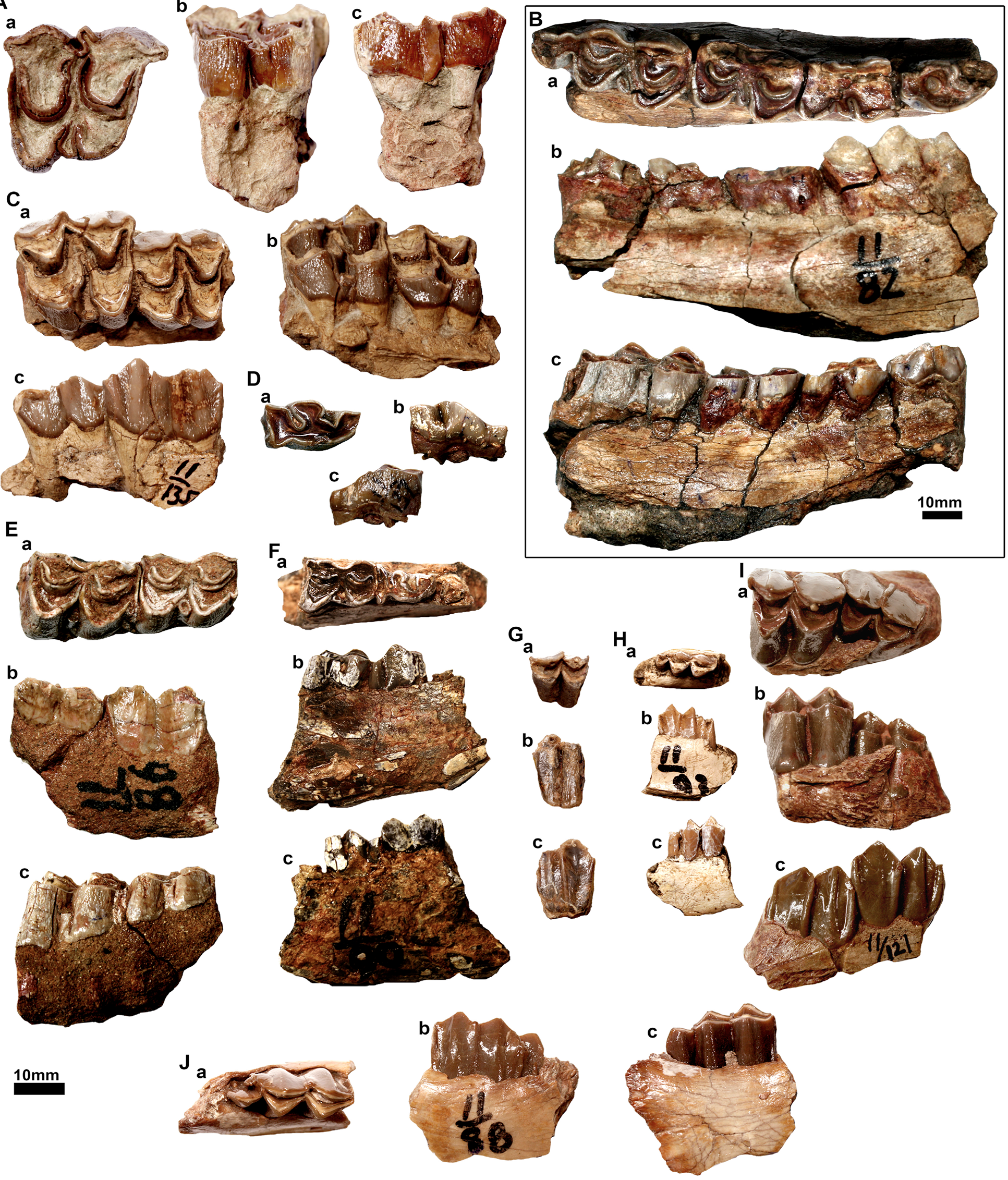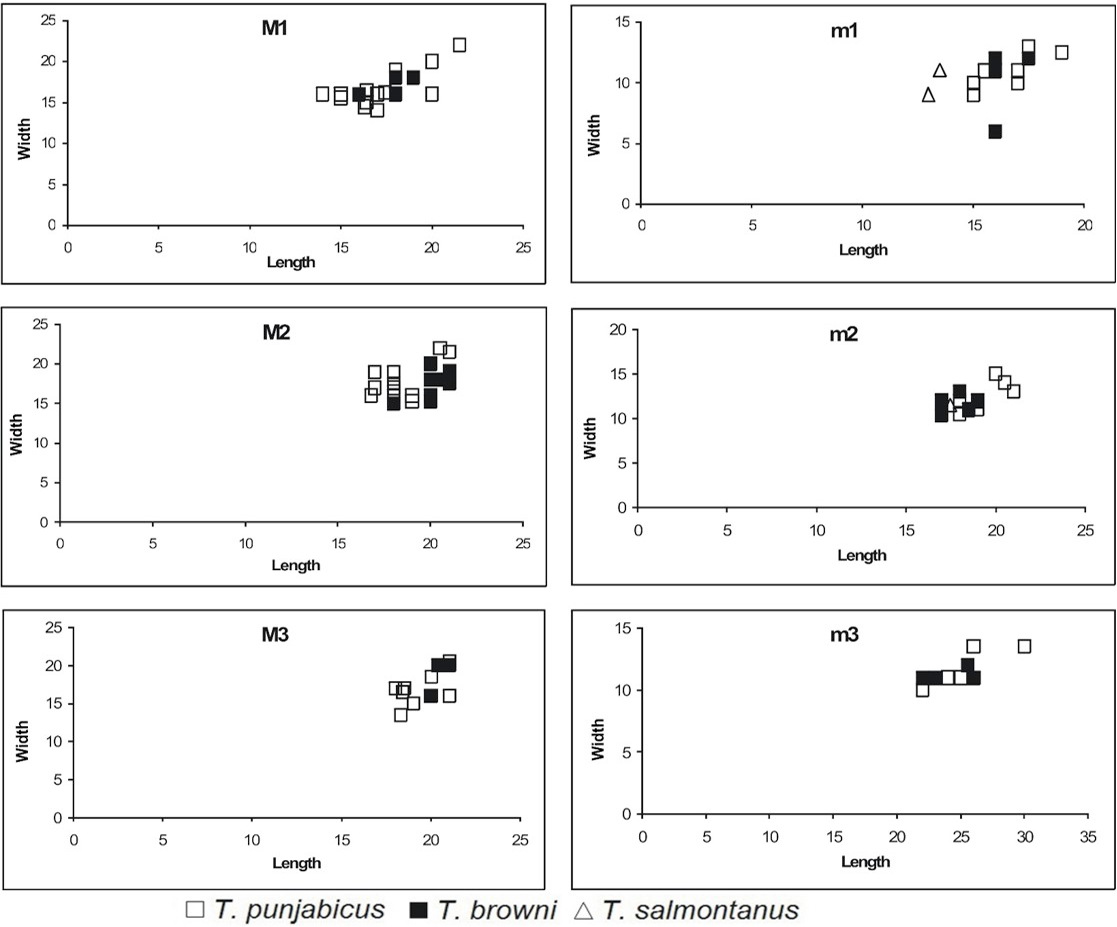Fossil Bovidae from Late Miocene Dhok Pathan Formation of Siwaliks, Northern Pakistan
Fossil Bovidae from Late Miocene Dhok Pathan Formation of Siwaliks, Northern Pakistan
Sayyed Ghyour Abbas1, Muhammad Adeeb Babar1,*, Muhammad Akbar Khan1, Kiran Aftab2, Ayesha Riaz3, Abdul Ghaffar4 and Muhammad Akhtar1
Location map of Potwar Plateau in Northern Pakistan showing the type locality of the Dhok Pathan Formation in Chakwal district, northern Pakistan (data from Johnson et al., 1982; Barry et al., 2002; Dennell et al., 2008; Nanda, 2008).
Pachyportax latidens: A, PC-GCUF 11/138, left M3; B, PC-GCUF 11/82, right mandible fragment with p4-m3. Tragoportax punjabicus: C, PC-GCUF 11/135, right maxilla fragment with M1-2; D, PC-GCUF 11/137, right p4; E, PC-GCUF 11/86, right mandible fragment with m1-2. Tragoportax cf. salmontanus: F, PC-GCUF 11/90, right mandible fragment with p4-m1. Elachistoceras khauristanensis: G, PC-GCUF 11/126, right M2; H, PC-GCUF 11/93, right mandible fragment with m3. Gazella lydekkeri: I, PC-GCUF 11/121, left maxilla fragment with M2-3; J, PC-GCUF 11/88, right mandible fragment with m3. Views: a, occlusal; b, lingual; c, labial.
Bivariate plot (in mm) of the Siwalik Tragoportax. Note the overlapping position of T. punjabicus (Pilgrim, 1910) and T. browni (Pilgrim, 1937) in the Late Miocene Dhok Pathan Formation in Northern Pakistan.
Bivariate plot (in mm) of the Siwalik boselaphines. Note the three morphs (small, medium and large) of the Siwalik boselaphines.














